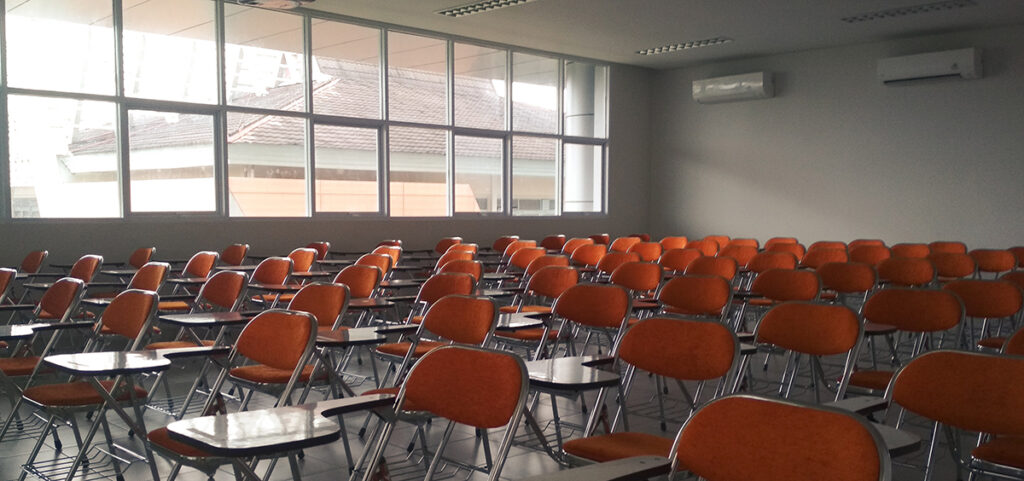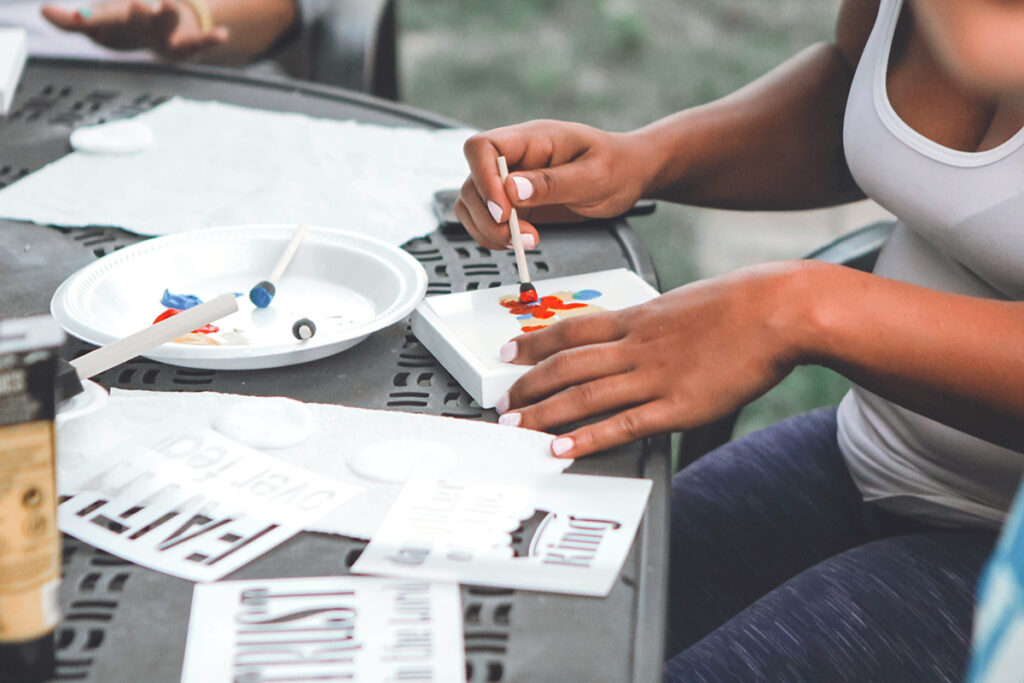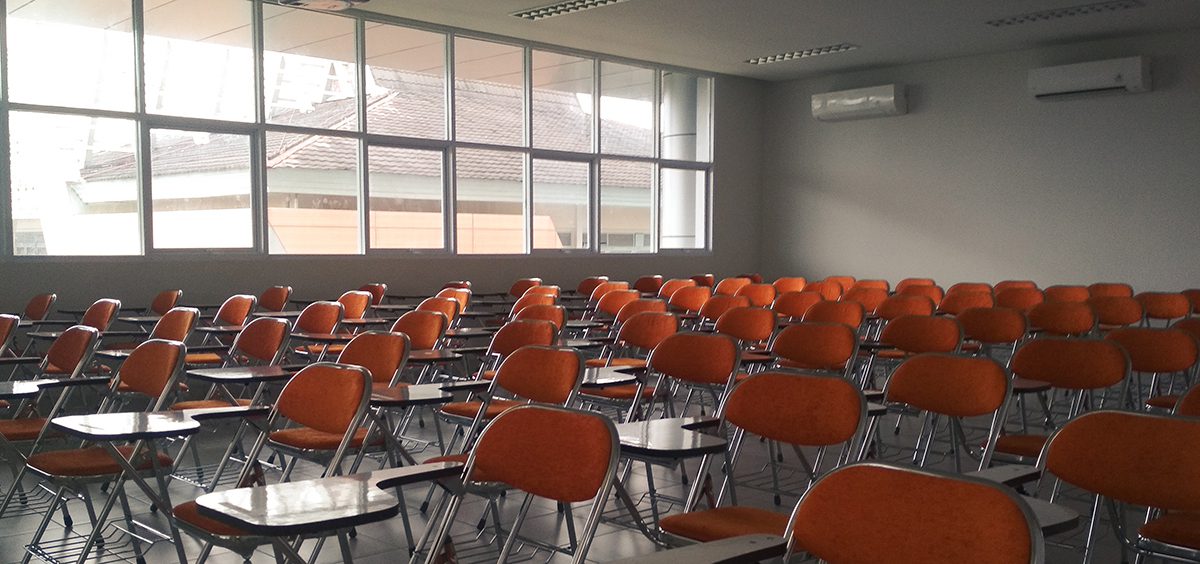As we prepare to go back to school, we may be seeing a disconnect when we look at our curriculums and budgets. There are many things we may be feeling unsure about. How we are going to get our field trips chaperoned? How will we get our art show up and ready in the spring? For some of us, we may not have a classroom to set up or art classes on our schedule. Where and how do we ask for help?
Partnerships are a fundamental part of any school. One of the most visible partnerships is the Parent Teacher Association–or PTA. This partnership is often overlooked by teachers. Art teachers must become invested in their school’s PTA. This partnership can blossom into creative possibilities and learning for all parties. The first step is to learn what a PTA is and how it can benefit you and your program.

What exactly is a PTA?
It is called a PTA. A parent-teacher association, not a parent association. Everyone involved is a volunteer focused on meeting student needs. Deb Tidwell has played many roles within her local PTA. She is currently the Parliamentarian for the state-level Ohio PTA. She formerly served as President. Deb remarks that it takes a village to run a PTA. She says, “the PTA creates the village that helps to raise our kids and strengthen our communities.”
The village doesn’t happen without effort. We have to work for those connections. “The difference between a great school and a wonderful school community are strong relationships between teachers, staff, and parents,” says Erin Bauer, an elementary school PTA president in Columbus, OH.
There is a difference between a PTA and a PTO despite their shared focus on school communities. A PTO is a Parent Teacher Organization that is school or district-level based. A PTA is part of a larger framework that includes local, statewide, and national representation. Deb Tidwell shares, “The PTA continually tracks local, state, and national policies every day so that we can advocate for what’s best for our students, families, and schools.” Policy and advocacy—that is a lot more than the cookie dough fundraiser that comes to mind. Policy and advocacy are the primary functions of PTAs and PTOs. But, there are many more positives of teaming up with your school’s parents.
Here are five benefits to becoming involved in your school-level PTA or PTO.
1. You get to fundraise for your program.
It is worth noting that many PTAs are the fundraising arm of the school. They often support financial needs outside of the school’s budget through events. In the art room, we have countless ideas for new projects. For example, a visiting artist or an entire school installation. But, these projects often fall outside of the allotted art budget. The PTA will be more likely to support these dreams with a mutual relationship already in place.

Often, teachers only attend PTA meetings when they want to propose a program or ask for project funds. Erin Bauer reflects, “the relationships that are formed and strengthened when no one is asking anything of anyone else are important to build community.” Show up for meetings and volunteer for events even when you aren’t asking for anything. You may need funding now or in a year. The relationships you build with the PTA may lead to granting a request precisely when you need it.
2. You get to share your voice and perspective.
The PTA needs to hear the voice of teachers. Deb Tidwell reflects that many of the officers at the national level are teachers. But local school-based groups need teacher voices as well. Highly involved teachers can share their classroom perspectives. They can reflect on the individual needs of their specific school. How many times has an initiative or program taken place within your school where you reacted with, “Well—if they had asked me…”? Attend meetings, listen, and share your viewpoint. You can help drive the decision-making. If committing to all the scheduled meetings is not plausible, make a plan with your unified arts team. You might consider rotating who attends the meetings. This will ensure there is always someone present with your team’s unique perspective.
Did you know that the National PTA has been a fierce supporter of the arts? The association has made calls for legislation advocating for strong arts in education. Your involvement in your local PTA can be a point of advocacy for art education at your school. Art teachers sometimes feel overlooked. If you have been relegated to study hall instead of teaching, look to your PTA for art advocates. Share their position statement to prompt necessary discussions.

The pandemic prompted many PTA meetings to happen virtually. This format helped engage more parents and teachers. Attendees could join meetings while sitting at soccer practice or making dinner. It is now easier than ever to take part in a PTA meeting and share your voice.
3. You get to learn about the community.
By attending a PTA meeting, you sit alongside parents who desire a stronger school community. Parents want what is best for their children. Not only will they be learning from you as an educational expert, but you will also learn from them. Involved parents have a lot to teach us about the community outside the school’s walls. This knowledge is paramount as it can drive rich and meaningful learning within the art room. Make connections and partnerships with parents is so important.
4. You get help!
As art teachers, we often find ourselves planning an event all on our own. Think about those art shows that are so rewarding and yet so demanding. Partnering with the PTA can bring enthusiastic parent volunteers who are ready to support your events. To ensure a smooth event, consider how involved you want your volunteers to be. Be sure to communicate your plans ahead of time. Erin Bauer reflects on how the PTA assists their school’s art teacher with her art show. The PTA holds a silent auction of community-donated artwork during the student exhibition. This is on top of helping with all the planning! The funds raised that evening go right back to supporting the arts at the elementary school.
A few years ago, I started a fundraiser called “Battle of the Brush.” Families sign up and attend a family painting night that has a secret art-making prompt. The admission fee includes the materials and inspiration. The first year we had 80 families attend with tables filling the cafeteria and gym. The energy was contagious as families sat and painted together. Despite the advanced and thorough planning, there were still unexpected hiccups. Instead of panicking, I sought out the parents of our PTO. They were there waiting to help and jumped at the opportunity to make the evening a success. I could not pull off a successful Battle of the Brush each year without them!

5. You get to volunteer and lead.
Your efforts or projects could not happen without volunteers. An easy way to give back is by volunteering for other people’s events. Make sure that any of your volunteering efforts align with your goals and priorities. If you are unable to take part in an event, express why and join another next time.
You might be looking for an opportunity to take on a leadership role. The PTA may provide an opportunity to lead an event that is completely outside the world of visual art. As a runner, I have planned “Fun Runs” and 5Ks for our school with the PTO. Erin Bauer remarks on the instrumental role of teachers in their International Festival and school talent show. Deb Tidwell shares that other staff members are more excited to take part in their colleague’s ideas.
Bonus: You get to be reflective.
Some PTAs are part of the national network of PTAs. This gives students opportunities to submit their work to The National PTA’s Reflections program. This 50-year-old program provides opportunities for recognition and access to the arts. Each year students submit artworks in several categories based on the year’s theme. The national conference features your school’s and student’s work.
Whether your school has a PTA or a PTO, it is important to share the incredible magic that happens within your art room. This gives parents an opportunity to learn from you. It also gives you an opportunity to learn about your students’ families and communities. There are so many possibilities for you to volunteer with like-minded individuals. As Erin Bauer puts it, “organizations such as PTAs and PTOs can be a way to bring the adults together, all working for the best outcomes for the children. After all, that has to be what it’s all about.”
Interested in more resources on building strong relationships with parents? We have you covered!
- 5 Ways to Build Better Relationships with Parents
- Parents Don’t Have to Be the Enemy
- Three Simple Ways to Grow Strong Relationships with Parents
- Parent Communication PRO Pack
- How to Get Great Parent Volunteers and Keep them Coming Back!
What other benefits have you experienced from joining your school’s PTA or PTO?
What event or project have you have always wanted to lead that the PTA or PTO could support?
What barriers stand in the way of your involvement with your school’s PTA or PTO? How can you remove a few of these challenges?
Magazine articles and podcasts are opinions of professional education contributors and do not necessarily represent the position of the Art of Education University (AOEU) or its academic offerings. Contributors use terms in the way they are most often talked about in the scope of their educational experiences.





